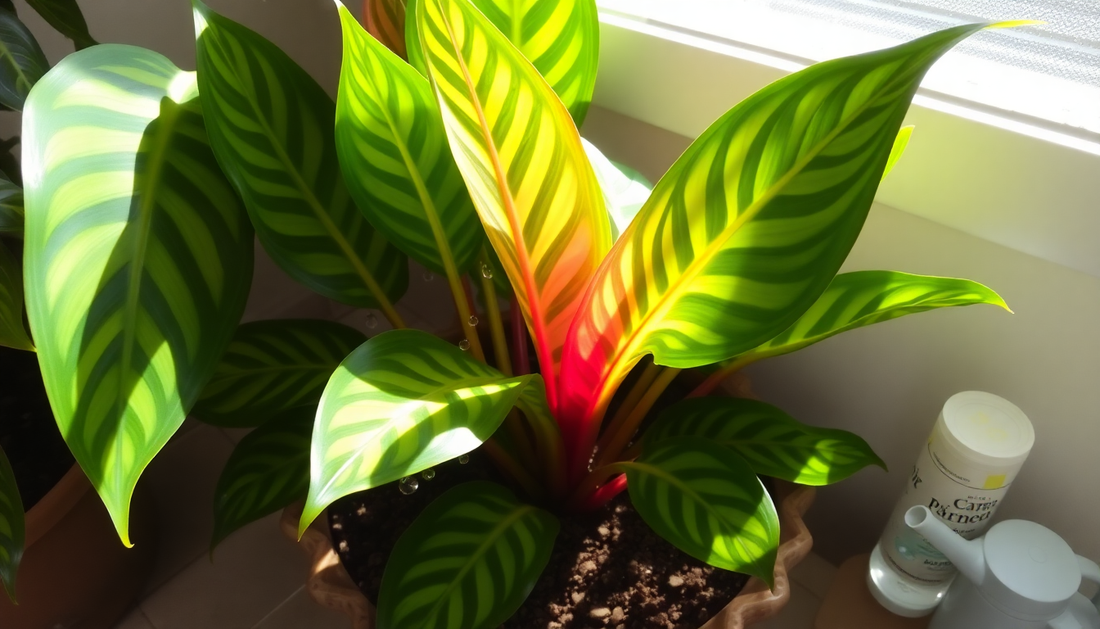
Prayer Plant Care: Comprehensive Guide to Water and Nutrient Needs
The Prayer Plant (Maranta leuconeura) is a beloved houseplant known for its eye-catching patterned leaves and unique behavior of folding its leaves upward at night, resembling hands in prayer. Native to the tropical rainforests of Brazil, this plant thrives in warm, humid environments with consistent care. Understanding the Prayer Plant’s specific water and nutrient needs is key to maintaining its vibrant foliage and overall health.
In this guide, we will explore everything you need to know about the ideal watering routine, nutrient requirements, and common issues that can arise when these needs are not met.
Watering Needs of Prayer Plants
Watering is one of the most important aspects of Prayer Plant care. These plants prefer consistently moist soil but are highly sensitive to overwatering, which can lead to root rot. Here’s a detailed breakdown of how to manage watering for a healthy plant.
1. How Often to Water
The frequency of watering your Prayer Plant depends on several factors, including the season, humidity levels, and the plant’s growth stage.
- Spring and Summer: During the active growing season, water the plant regularly to keep the soil evenly moist. This may mean watering once or twice a week.
- Fall and Winter: In the dormant season, reduce watering to prevent overwatering. Allow the top 1–2 inches of soil to dry out before watering again.
2. Water Quality
Prayer Plants are highly sensitive to water quality. Tap water that contains high levels of chlorine, fluoride, or hard minerals can cause leaf tips to brown.
- Best Option: Use filtered or distilled water for your Prayer Plant.
- Alternative: Allow tap water to sit out for 24 hours to let chlorine dissipate before using it on your plant.
3. Signs of Watering Problems
Here are common signs that your Prayer Plant’s watering routine may need adjustment:
- Overwatering: Yellowing leaves, mushy stems, and root rot are signs of too much water.
- Underwatering: Leaf curling, wilting, and dry, crispy leaf edges indicate the plant is not getting enough water.
Nutrient Requirements for Prayer Plants
Prayer Plants are not heavy feeders, but they still need regular nutrition to grow well. A balanced approach to fertilization ensures your plant produces lush, vibrant leaves without overloading the soil with unnecessary salts.
1. Key Macronutrients
Like all plants, Prayer Plants require macronutrients for basic growth and health. The most important macronutrients are:
- Nitrogen (N): Essential for healthy foliage growth and vibrant green leaves.
- Phosphorus (P): Supports root development and overall plant strength.
- Potassium (K): Helps regulate water movement in the plant and enhances disease resistance.
2. Micronutrients
In addition to macronutrients, Prayer Plants need trace amounts of micronutrients such as calcium, magnesium, and iron. These nutrients contribute to photosynthesis, enzyme function, and cell structure.
3. Fertilizer Recommendations
- Use a balanced liquid houseplant fertilizer (e.g., 10-10-10 or 20-20-20) diluted to half strength.
- Fertilize every 2–4 weeks during the growing season (spring and summer).
- Avoid fertilizing during the dormant period (fall and winter) to prevent nutrient buildup in the soil.
4. Organic Fertilizer Options
If you prefer a natural approach, organic fertilizers can be a great alternative. Some options include:
- Compost Tea: A gentle, nutrient-rich solution that boosts soil health.
- Fish Emulsion: High in nitrogen and ideal for promoting lush foliage.
- Worm Castings: Provide slow-release nutrients and improve soil structure.
Humidity and Environmental Factors
Since Prayer Plants are native to tropical rainforests, they thrive in high humidity and warm temperatures. Mimicking their natural environment will ensure healthy growth and reduce the risk of stress-related problems.
1. Ideal Humidity Levels
Prayer Plants prefer humidity levels of 50% or higher. If your home is dry, consider these strategies:
- Place a humidifier near the plant.
- Set the plant on a pebble tray filled with water to increase local humidity.
- Mist the leaves regularly with distilled water.
2. Temperature Requirements
- Maintain temperatures between 65–75°F (18–24°C).
- Avoid placing the plant near drafts, heating vents, or air conditioners, as sudden temperature changes can cause stress.
Common Issues and Solutions
Even with proper care, Prayer Plants may experience problems related to water and nutrient imbalances. Here are some common issues and how to address them:
1. Yellowing Leaves
Often caused by overwatering or a lack of nutrients, particularly nitrogen. Adjust the watering schedule and consider using a balanced fertilizer.
2. Leaf Curling
Typically a sign of underwatering or low humidity. Increase watering frequency and humidity levels to revive the plant.
3. Brown Leaf Tips
This issue is usually due to the use of hard water containing salts or fluoride. Switch to filtered or distilled water to prevent further damage.
4. Stunted Growth
Could indicate a lack of nutrients, especially phosphorus and potassium. Use a balanced fertilizer to encourage healthy growth.
Conclusion
Prayer Plants are stunning and rewarding houseplants when given the right care. By understanding their specific water and nutrient needs, you can ensure they thrive in your home. Remember to maintain consistent moisture, provide the proper nutrients, and create a humid environment that mimics their tropical origins. With a little attention and care, your Prayer Plant will reward you with lush, vibrant foliage and its signature prayer-like movements.
Nutrient and Water Needs for Spider Plant (Chlorophytum comosum): A Complete Care Guide
